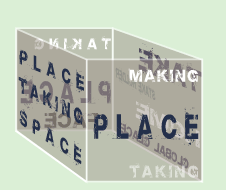Urban Center Becomes Urban Periphery; Urban Periphery Becomes Urban Center
by Stefanie B?rkle
The division of Berlin and the construction of the Wall turned areas once located at the center of city into unattractive peripheries at the edge of East and West Berlin. But the border zone was also an environment in which many types of niches and subcultures could grow. Schlesisches Tor in Kreuzberg is a prime example. The prominent corner lot across from the subway station remains empty—an enduring testament to the destruction of the Second World War. Now what was once considered “niche” is today considered part of the neighborhood heritage. In 1987, Germany’s international building exhibition (IBA) decided against new construction and opted to renovate the district instead. Today, of course, Schlesisches Tor is no longer located at the end of West Berlin and along the border of the Wall but smack in the middle of the city, where its temporary status will soon become a permanent part of Berlin’s urban space.
Other Niches
The strip of land immediately to the east of the Berlin Wall was once known as the Todestreifen. Anyone caught inside it would be shot dead. Today, 20 years after reunification, it signifies something entirely new: open, unused space. Real estate developers, realizingits potential profits, quickly moved to get the property on the market. Now family condos and townhouses are cropping up all along Bernauerstrasse between Wedding and Mitte—once a line of demarcation between East and West Berlin. The dream of owning one’s own house with garden and balcony in the middle of the city has come true.
Photographic themes on niche, unused space, and temporary use can be found on page 3.

